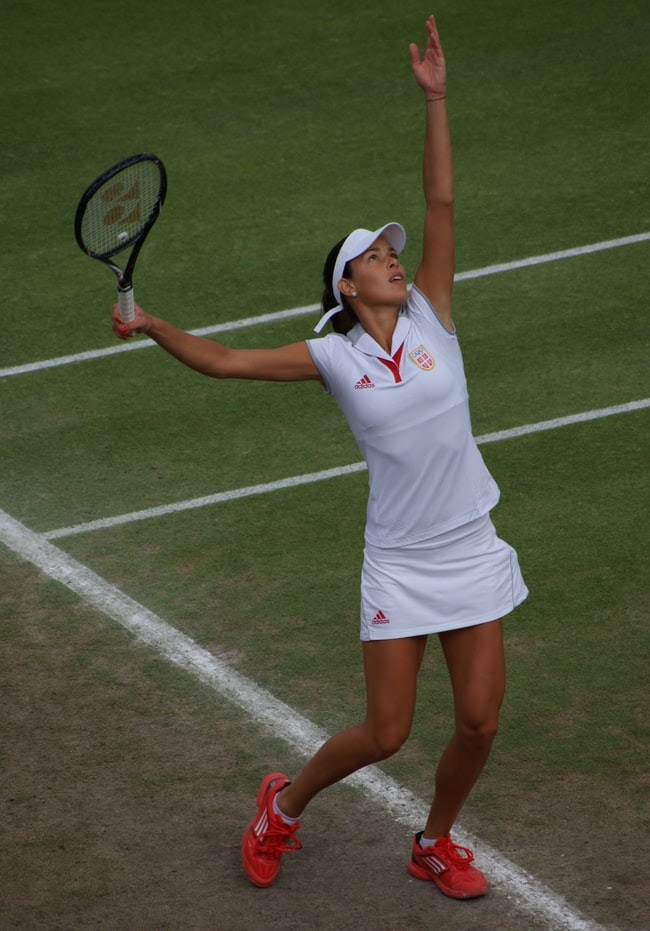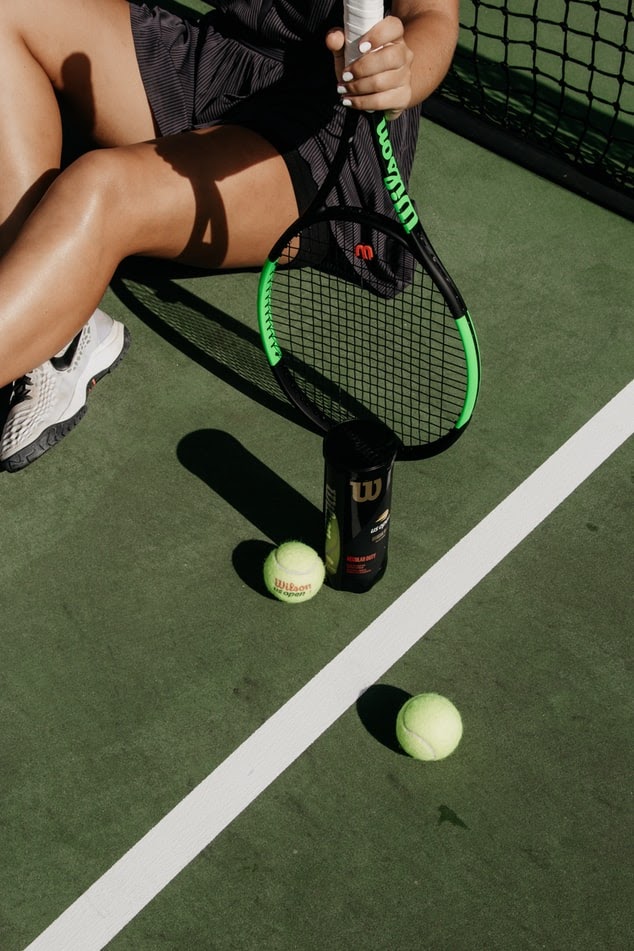Tennis is the most popular individual sport in the world, with more than a billion fans. There are nearly 18 million active players in the United States and another 14 million who say they are interested in the game but have not yet picked up a racquet. The cost of entry is also low, compared to many sports. A decent adult racquet averages $60. Add another $10 or less for a can of 3 tennis balls, gym shorts, a t-shirt and a pair of comfortable athletic shoes, and you’re all set.

Because of the sport’s popularity, private tennis coaches are in hot demand. You can find work as a tennis pro at a private country club, teach a school team or run your own business as a private coach, which is where you stand to make the most money unless you’re coaching a player on the pro circuit.
If you’re interested in becoming a private tennis coach, chances are you have a lot of experience playing tennis. Training as a private coach will take your skillset further, while showing you how to prepare tennis lessons and teach them effectively. Certification as a private coach will also help you develop the skills needed to run your own business.
One of the joys of tennis is new superstars are always emerging as champions of the sport. Perhaps you’ll coach one of them. But first, you’ve got to get ready.
In this article you’ll learn:
- How much money you can make as a private tennis coach
- The required training and certifications
- Professional groups to join
- Employment opportunities
- Finding players as a private tennis coach
- Plus helpful tips for private tennis coaches
How much money can you make?
Nationwide, private tennis coaches charge between $25 and $90 an hour, with $45 per hour being the average. Coaches with many years of experience or tournament wins can charge more due to their reputation in the sport.
Fees are usually charged by the full hour to encourage longer student participation. For instance, a private coaching charging $45 an hour might charge $25 or $30 for 30 minutes to encourage students to book the full hour. Think about it: your transportation costs to get to the tennis court and other business expenses are the same whether you’re coaching for 30 minutes or a full hour. Over time, it will be more profitable and efficient to coach by the hour.
Training and Certification
There are two main ways to become certified as a professional tennis coach: through the United States Professional Tennis Association (USPTA) or the Professional Tennis Registry (PTR).
The main difference between the associations is how their programs are designed. The USPTA certifies coaches to teach at all skill levels and age groups, and then allows coaches to progress based on their growing experience and knowledge. The PTR certifies coaches to work with specific age or skill levels and offers specialization training.

Let’s start with the USPTA program.
You can review the USPTA’s accreditation manual here.
Starting in 2021, USPTA will require new certification candidates to have 1,500 hours (or a 1-year apprenticeship) of education. Mentors will also be assigned to new applicants to assist them through the certification process.
Part of accreditation includes completion of the Safe Play course. Safe Play is the USPTA’s athlete safety program for appropriate conduct in tennis.
USPTA membership is currently $224 a year. There is also a $199 application fee. You receive discounts for paying 3-5 years in advance, or you can buy a lifetime membership for $750.
To advance your training, you can also become certified in specializations including padel, pickelball and wheelchair accreditation.
Several tennis organizations offer the training program leading to USPTA certification so it’s worthwhile to shop around for the best price. Currently the cost of the certification program is about $600.
Here’s what you can expect to learn:
- How to plan, organize, and manage group and private lessons for beginners through intermediate-level players.
- Organize and conduct competitive and social events for players of all ages and levels, including USTA tournaments, and in-house play.
- A basic foundation of the sports sciences, so you will be able to apply the principles of growth and development when working with young players.
- How to string and re-grip racquets and recommend the right equipment to students.
- Tennis facility business operations and safety.

There are three levels of USPTA certification: professional, elite professional and master professional. You cannot become an elite professional until you pass the professional exam, and you can’t become a master until you have been an elite for at least 10 years.
PTR membership and certification
PTR membership and certification is currently $299 in the United States and Canada. After that, annual membership is $159.
There are 5 steps leading to PTR certification:
- Register for a Certification Workshop and choose the age group you want to coach: 10 & Under, 11 to 17, Performance or Adult Development.
- Attend the Certification Workshop (10 & Under, 11 to 17, Performance or Adult Development). At the completion of the workshop, you can take the certification test.
There are eight regional PTR education centers in the United States where you can complete the workshop.
- Study and Prepare for the Certification Test
After you submit your application, membership fees and workshop registration, PTR sends a link to access study materials for the workshop and certification testing.
- Background Check & Safe Play
This is now a requirement for all certified coaches in the United States. More information on completing the Safe Play training is available here. The class costs $20.
- Pass the PTR Certification Test

The highest certification rating is Professional, followed by Instructor, then Associate Instructor. Your overall certification rating is the lowest of your test scores.
You can retake any of the tests 60 days after your most recent exam date. Retesting fees apply. If you post a lower score on your second try, you can keep your original score.
Some of the benefits of PTR membership and accreditation:
- Continuing Education Award Levels
- Listing on the PTR Find a Coach/Pro website
- Media Kit
- Custom Business Cards
- Job Bulletin
- $6 Million liability insurance coverage available
- Sexual Abuse & Molestation Insurance
- Education Dashboard with free content
- Invitations to the International Tennis Symposium, tournaments, conferences and courses
- PTR Coach App – A tool for video analysis, technical reference, goal setting, and player assessments. Loads on your smartphone.
Both the USPTA and PTR are nationally recognized organizations that help their members with developing and operating as a tennis coaching professional, on-court insurance, discounted apparel and equipment, plus teaching, lesson tools and other resources.
Private coaches can be a member of both organizations at the same time.
Both associations evaluate coaches in training with on-court skill tests and written exams that cover tennis technique, teaching skills and business management.
The USPTA requires professionals to earn six education credits every three years to maintain their certification.
You’ll also be evaluated on your preparation of basic lessons for students. The lessons should include technique, strategy, practice habits, and conditioning, moving into ground strokes, serves, returns, footwork and net play.
Professional Groups to Join
You’ll want to maintain membership in your accrediting organization, either the USPTA or the PTR. You can also follow the Association of Tennis Professionals (ATP) for men players and the Women’s Tennis Association (WTA). Both associations provide up-to-date tournament calendars and a wealth of news and information of value to private coaches.
Employment
To find work as a tennis pro at a country club or athletic facility, you’ll need certification from one of the major organizations as outlined above. Certification is such a standard expectation that you’ll be at a competitive disadvantage in the job market until you’ve got that credential.
Country clubs are a great place to start looking for work. Also, local athletic facilities including the YMCA will need tennis coaches for their programs. This is where it helps to have multiple certifications so you can coach different age levels.

Coaching high school or college teams can provide an income while you work to establish your private coaching business. At the high school level, many coaches work with teams part-time and teach school as their main occupation. If you don’t have a teaching license and college degree in education, you’ll need to check with local schools to see if they employ seasonal coaches on a part-time basis.
Finding Clients
USPTA-certified tennis pros receive priority listing on the US Tennis Association Net Generation Coaches Search website. This helps nearby clients find you based on location. You’ll also want to sign up on the USTPA’s own search site for pro coaches.
PTR members can list their business on the organization’s Find a Coach/Pro website.
Word-of-mouth advertising remains an excellent way to build your client base. Once you have one private client, ask that individual to spread the word, leave reviews of your coaching on social media platforms and tell everyone in their circle of friends who is interested in tennis.
If you offer specialized training, promote your private coaching to local college and high school teams whose members may want to focus on certain skills during the off-season.
Offer incentives to new students who book a block of training sessions, as opposed to just an hour or two.
Good to know:
- Effective tennis coaches work within the age groups and skill levels they’ve been trained to teach. Resist the temptation to take on a student whose skills or age are outside your area of teaching expertise.
- Set competitive rates for half hour and full hour sessions. Call around and check with other tennis pros to find out what they’re charging.
- Decide on your availability and a consistent location for training.
- Do you need to budget in the fees for court time to hold your training sessions, or will you be able to find a free public court that is consistently available during your coaching hours?
If you enjoyed this article, check out some other PocketSuite.io content that can help you grow your career as a private tennis instructor. Here’s a great place to start.
PocketSuite has thousands of business owners who all started where you are right now. Our community is always happy to help you ramp up, grow your client base, and achieve your income goals, both within the PocketSuite app and as part of our exclusive Facebook Community Group. PocketSuite’s vision is for any professional to be able to work for themselves and make a great living. It starts here. It starts with you. It starts today. Let’s get started, download PocketSuite now! Feel free to reach out with any questions (we’d love to hear from you)! Text us @ (415) 841-2300.





